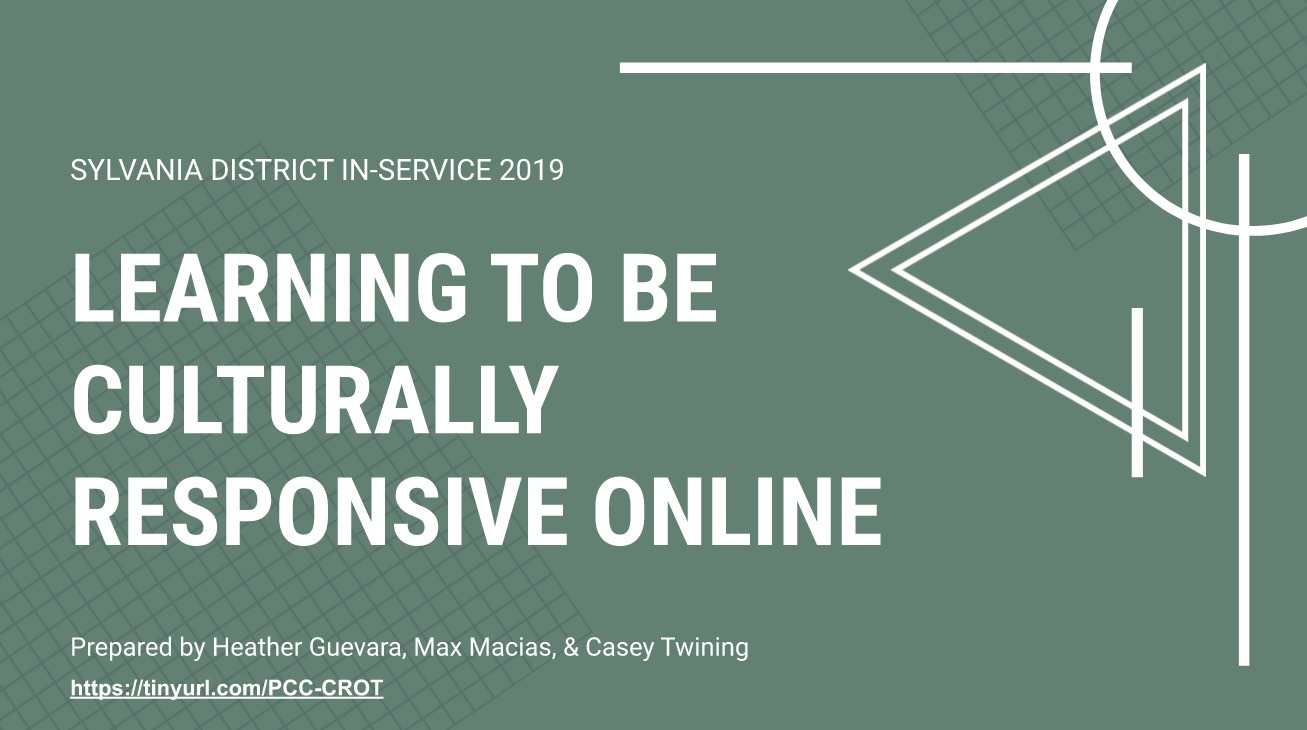This content was published: September 30, 2019. Phone numbers, email addresses, and other information may have changed.
Learning to be culturally responsive online
Posted by Russell Banks
 During the District In-Service this year at Sylvania campus, Heather Guevara, Max Macias, and Casey Twining facilitated a presentation and discussion session around Culturally Responsive Teaching practices. The presentation outlined some of the history that informs CROT (Culturally Responsive Online Teaching) based in Critical Race Theory, which is a broad, multi-faceted subject in itself. However, this presentation was for anyone interested in learning strategies to combat historically problematic teaching methods, targeting the syllabus, discussion area, and video in an online course.
During the District In-Service this year at Sylvania campus, Heather Guevara, Max Macias, and Casey Twining facilitated a presentation and discussion session around Culturally Responsive Teaching practices. The presentation outlined some of the history that informs CROT (Culturally Responsive Online Teaching) based in Critical Race Theory, which is a broad, multi-faceted subject in itself. However, this presentation was for anyone interested in learning strategies to combat historically problematic teaching methods, targeting the syllabus, discussion area, and video in an online course.
For an instructor who has answered the ‘why’ they would like to make their course culturally responsive, this presentation will give them specific techniques to encourage CROT principles like:
- Modeling Self-Disclosure: introduce the class to yourself in a more personal way; provide them with information that illustrates a safe-space environment.
- Encouraging Counter Narratives: create discussion prompts that allow the student to synthesize learning through their perspective, not the dominant culture’s prescribed answer.
- Utilizing “Selective Vulnerability”: a term coined by Zaretta Hammond, this principle deals with modeling productive and appropriate sharing behavior in video and the discussion area while providing details from your personal experience.
- Promoting an equitable atmosphere: design your syllabus to communicate the intentions and boundaries of instruction without using alienating or overly legal language.
Here is their presentation for you to review. Please note the final slides that show you where you can find resources to help redesign or edit your course, as well as further reading:

